Navadurga refers to the nine powerful forms of Maa Durga, each worshipped during the sacred festival of Navratri. These forms show different sides of the divine—gentle, fierce, nurturing, and wise. From Shailaputri’s calm strength to Siddhidatri’s divine blessings, each day of Navratri brings a unique chance to connect with the goddess. This sacred journey reminds us of our inner power, helping us grow spiritually and face life with courage and grace.
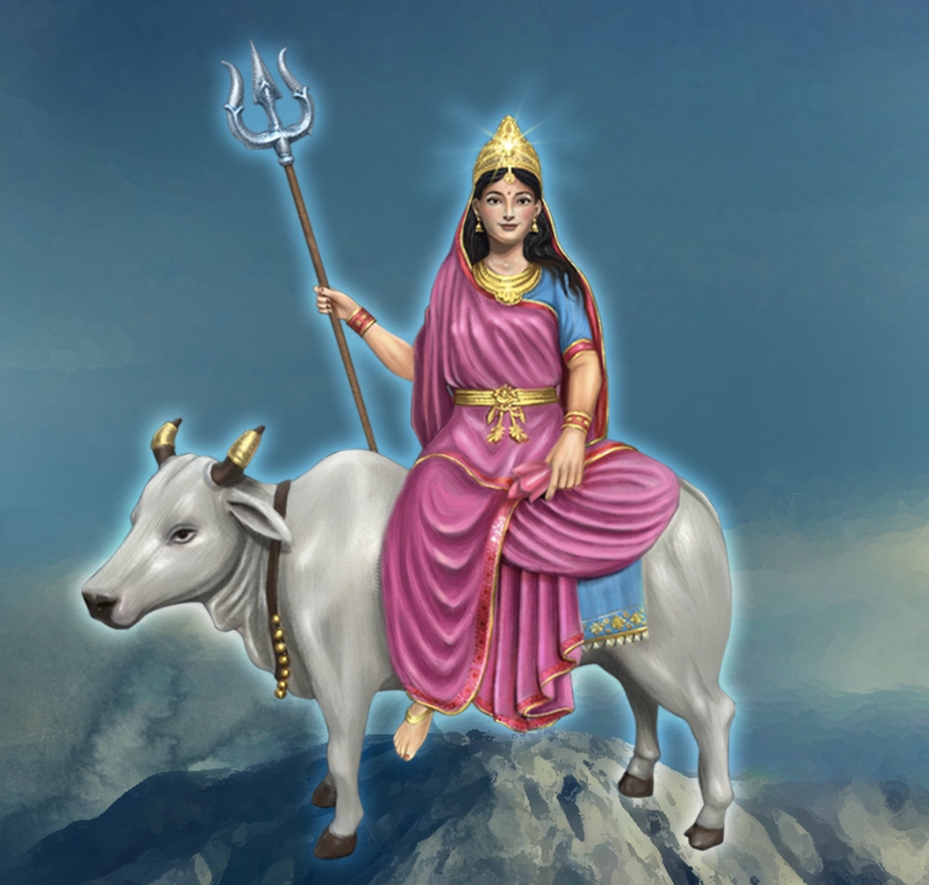
Shailaputri: The First Form of Maa Durga and Symbol of Strength
Shailaputri is the first appearance of Maa Durga, representing pure determination and strength. She is called the ‘Daughter of the Mountain’ because she was born there, showing her firm and steadfast nature. She rides a bull and holds a trident and a lotus, symbols of her connection to nature and its purifying powers. Each year, her worship begins Navaratri, setting the stage for a time of deep spiritual focus and renewal. People pray to her for the strength to face life’s hurdles, inspired by her role as Mother Nature’s powerful and caring aspect. Her presence reminds us of the solid base we need to handle life’s challenging moments.
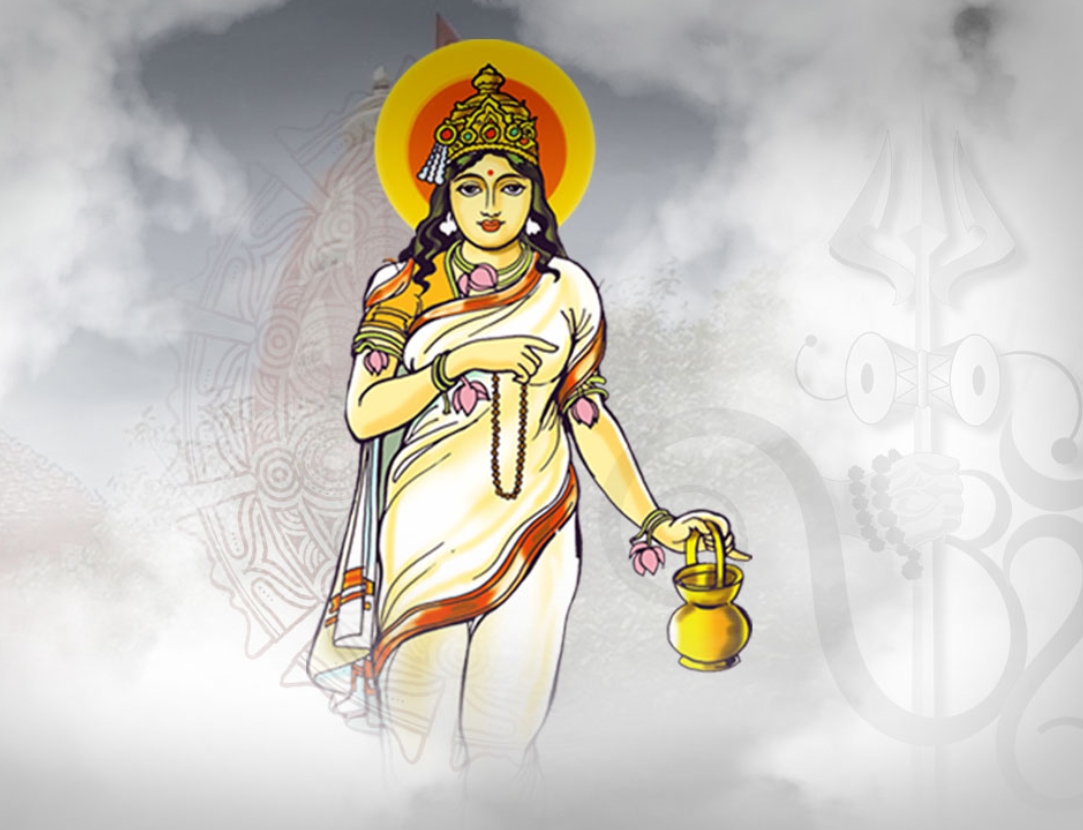
Brahmacharini: The Embodiment of Devotion and Penance
After Shailaputri, we meet Brahmacharini, known for her deep devotion and harsh penance. She represents the second aspect of Maa Durga, focusing heavily on meditation and austerity. You can picture Brahmacharini walking barefoot, dressed in white, with a rosary in one hand and a water pot in the other. Her image shows how vital dedication is when you’re after spiritual and personal growth.
People who follow her believe her blessings bring endurance, goodness, and peace. When her day comes around during Navaratri, the practices are about building inner strength and resilience. Brahmacharini’s story is a powerful reminder to face hardships with poise and to stay committed to your spiritual journey.
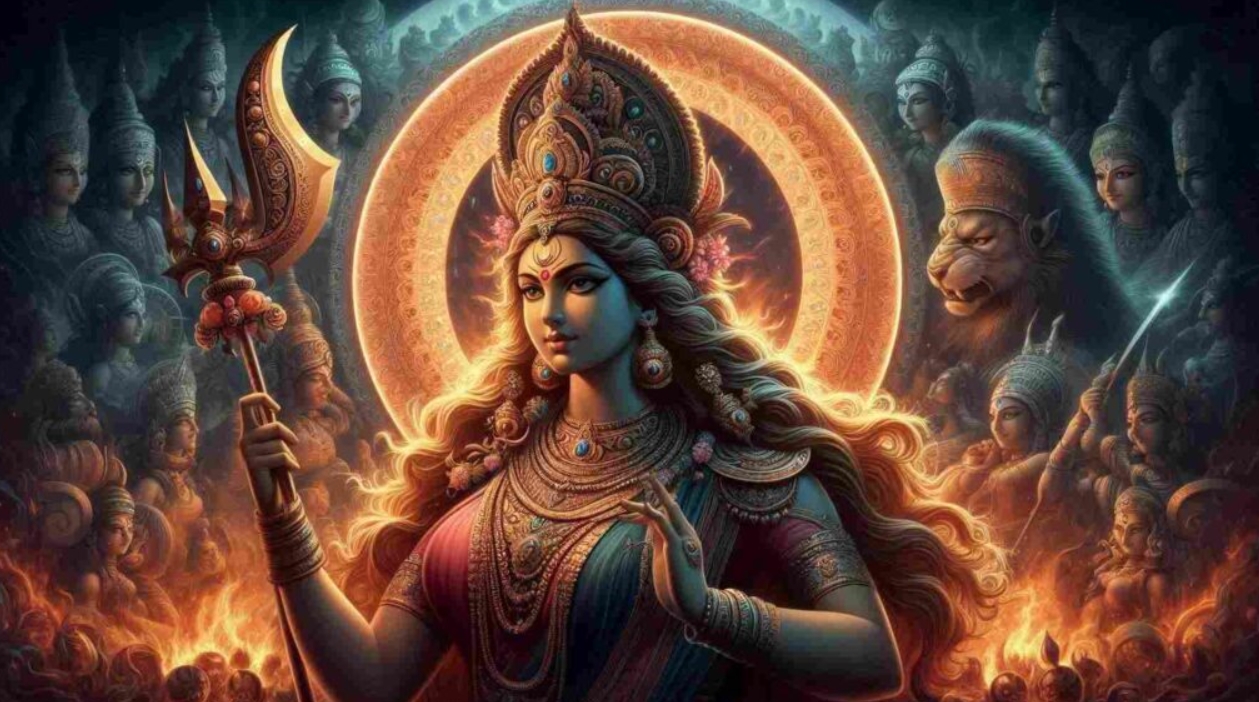
Chandraghanta: The Fierce Protector Who Destroys Evil
Moving from the calm Brahmacharini, we meet Chandraghanta, the third form of Maa Durga. She’s known for her fierce fighting skills. This avatar stands for courage, shown by her riding a tiger and holding weapons in her ten arms. Her name comes from the half-moon shaped like a bell on her forehead, which means she’s always ready to fight against unfairness.
People who worship Chandraghanta get courage and strength from her, helping them to face challenging situations and defeat their foes. Her roar scares off evil, keeping her followers safe. We celebrate her on the third day of Navratri, honoring her as a rigid protector who fights off evil.
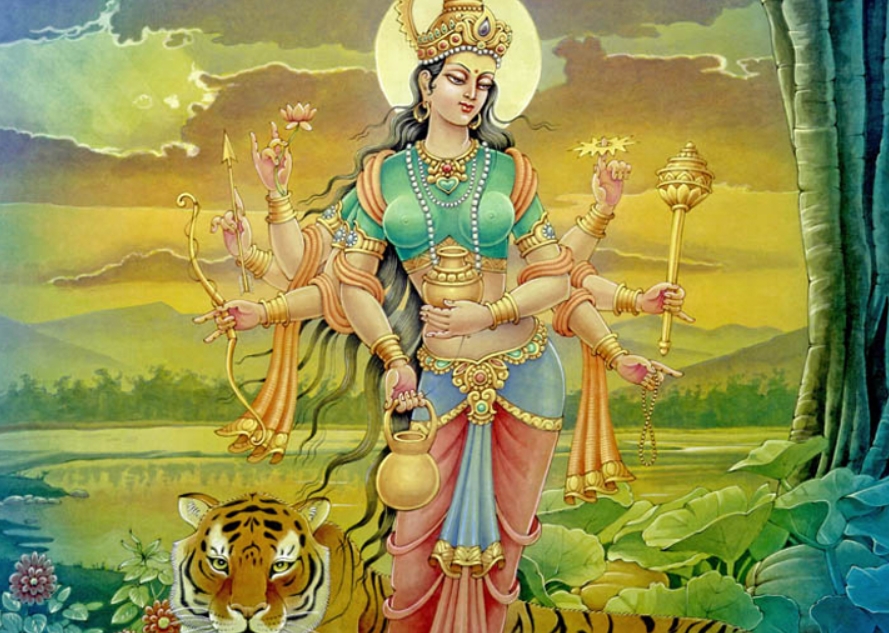
Kushmanda: The Cosmic Creator with a Divine Smile
After celebrating Chandraghanta, the fierce protector, we turn our attention to Kushmanda, the fourth form of Maa Durga. Known as the creator of the universe, it’s said that Kushmanda formed the cosmic egg with just a smile, filling the darkness with her light. This form of Durga brings warmth and energy, living at the sun’s core.
Kushmanda has eight arms, each holding meaningful items like a discus, sword, mace, lotus, a jar of nectar, and a rosary that grants eight Siddhis and nine Nidhis. Her lion mount shows her immense power. Worshipping her is believed to improve health, strength, and cure diseases, benefiting her followers’ spiritual and physical health.
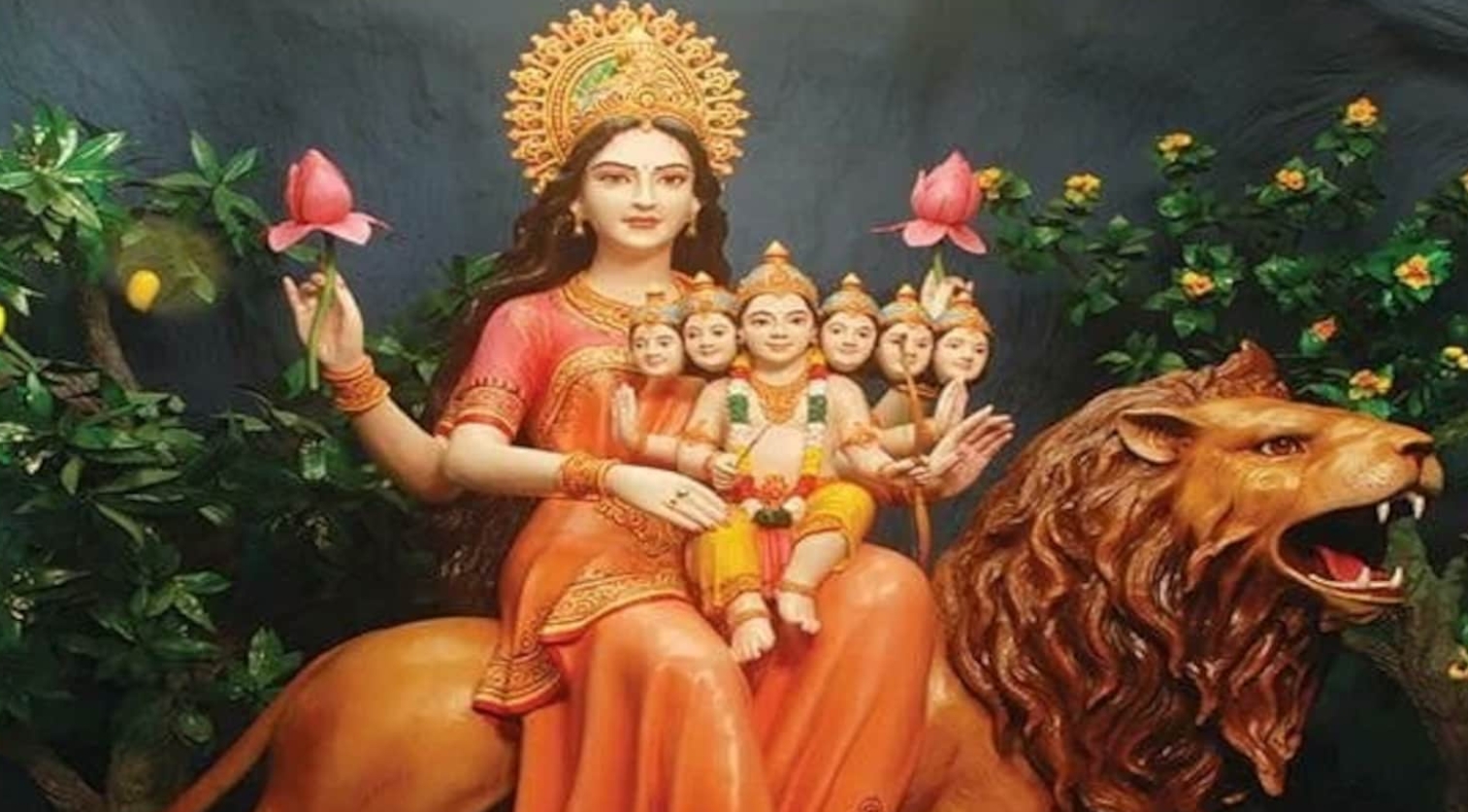
Skandamata: The Motherly Form Who Blesses with Wisdom
Skandamata is the fifth form of Maa Durga, known for her motherly love and wisdom. She is celebrated on the fifth day of Navaratri. She sits on a lion, four arms ready to help, holding her son Skanda. This image shows the strong connection between a mother and her child. She teaches us the importance of caring and nurturing while sharing her wisdom.
People who pray to Skandamata receive wisdom and knowledge. This guides them towards a path of salvation. Her followers feel her unconditional love and deep understanding, making her an essential figure for those looking to grow spiritually and find enlightenment.
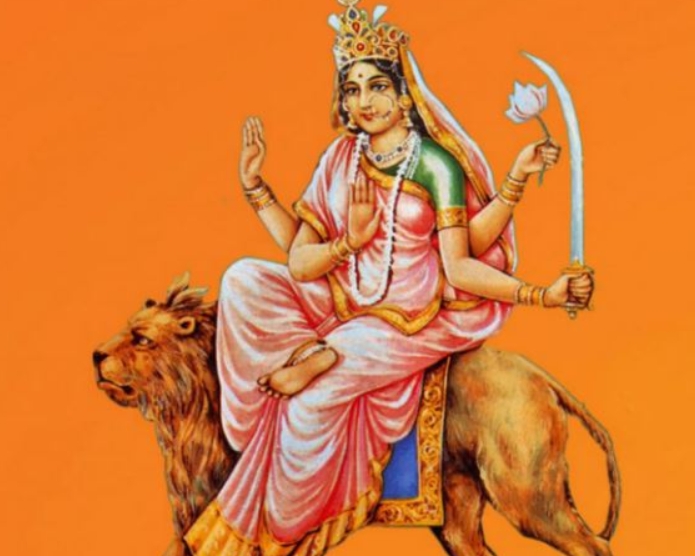
Katyayani: The Warrior Goddess Who Destroys Demons
While Skandamata teaches wisdom and care, Katyayani is about the warrior spirit. She’s seen as a symbol of bravery and is celebrated on the sixth day of Navratri. Katyayani has four arms, carries a sword and a lotus, and rides a mighty lion. She came to be from the gods’ shared anger, aimed at destroying the demon Mahishasura. This act symbolizes the defeat of ego and evil.
People turn to her for the courage and strength to face tough times and enemies. Her blessings are often sought after for a happy marriage, giving her followers the strength to overcome life’s hurdles and find spiritual success.
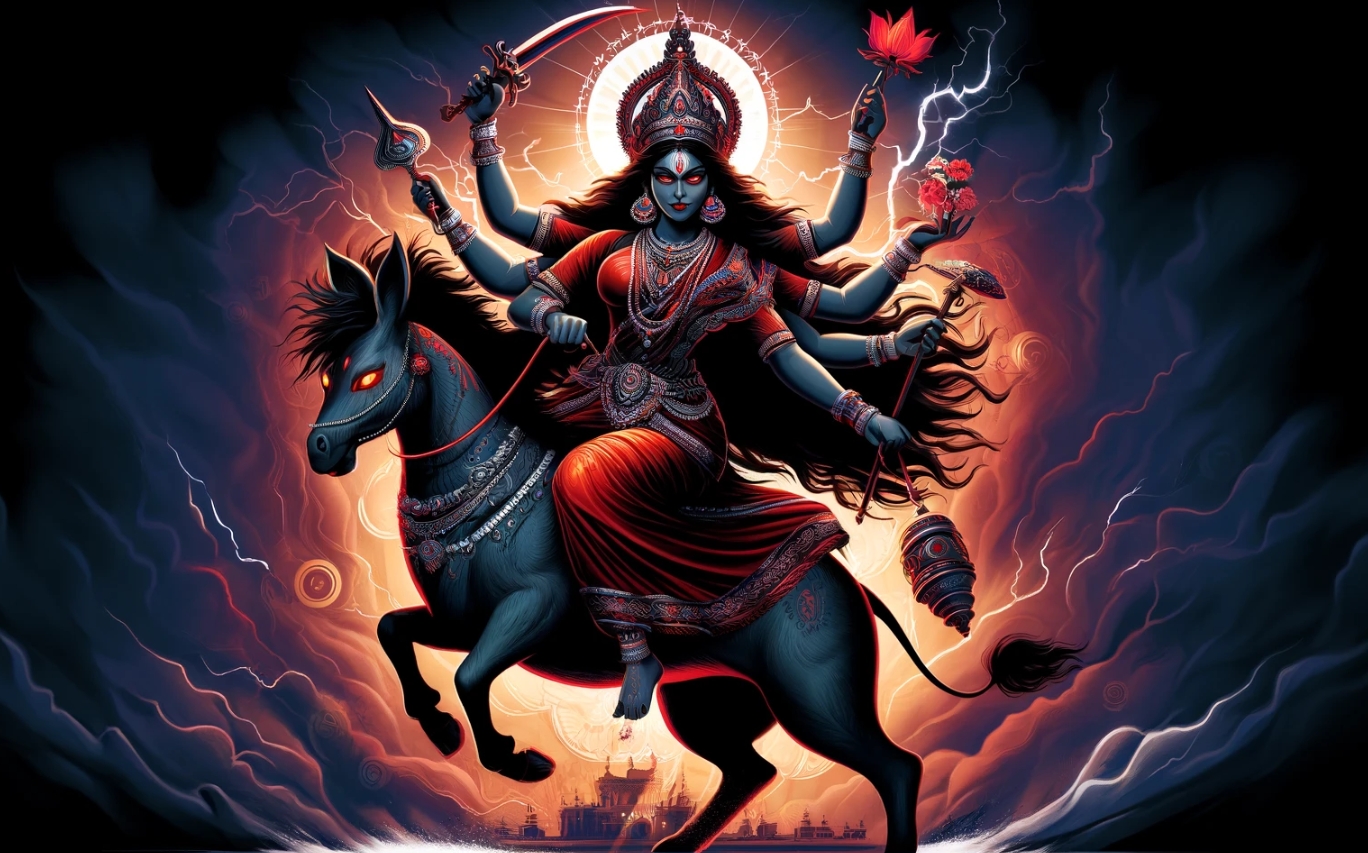
Kalaratri: The Fearless One Who Ends Darkness and Negativity
Kalaratri is the seventh form of Maa Durga and is known for her fierce nature. She represents the end of darkness and opposing forces. She appears dark in color, rides a donkey, and breathes out flames. Kalaratri has four hands; two offer protection and blessings, while the others hold a thunderbolt and an iron hook. Her three eyes shine powerfully, destroying evil and ignorance.
We celebrate her on the seventh day of Navaratri, a time for overcoming fears and challenges. People believe praying to Kalaratri strengthens them, clears obstacles, and cleanses their souls from sins and hardships. Isn’t it fascinating how she embodies such power and fierceness? By focusing on her, devotees find the courage they need. She cuts through the dark, guiding them with her intense energy.
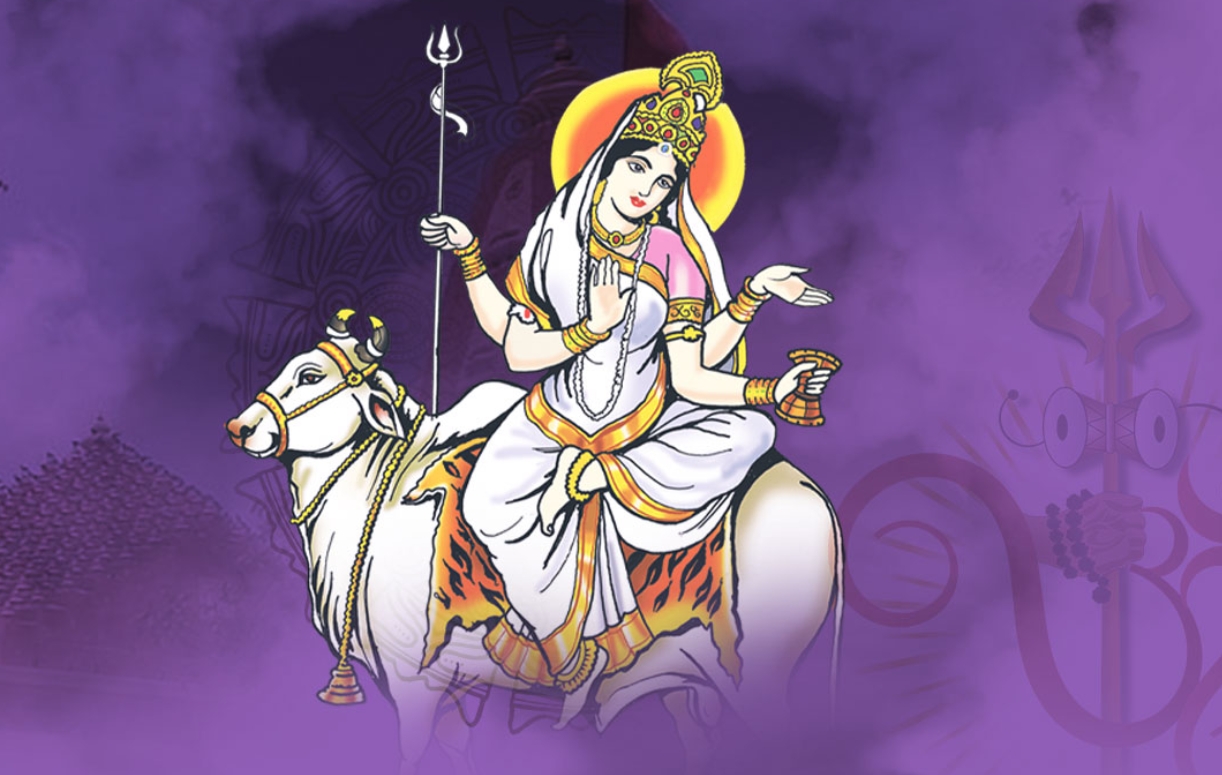
Mahagauri: The Radiant Goddess of Purity and Peace
Mahagauri, the eighth form of Maa Durga, stands for purity and calm. She’s often shown in a shining white outfit, riding a white bull. She holds a trident and a small drum, which shows she balances life’s calm and stormy sides.
People worship her on the eighth day of Navaratri, a festival dedicated to the divine feminine. Her followers believe that her blessings clean the soul and lead to a virtuous, peaceful life.
She brings deep peace, like a calm sea or a perfect pearl. Her simple style teaches us the value of purity. It encourages us to keep our thoughts and actions clear and honest.
Read More – 10 Lines on Dussehra in Hindi – Simple and Meaningful Sentences for Students
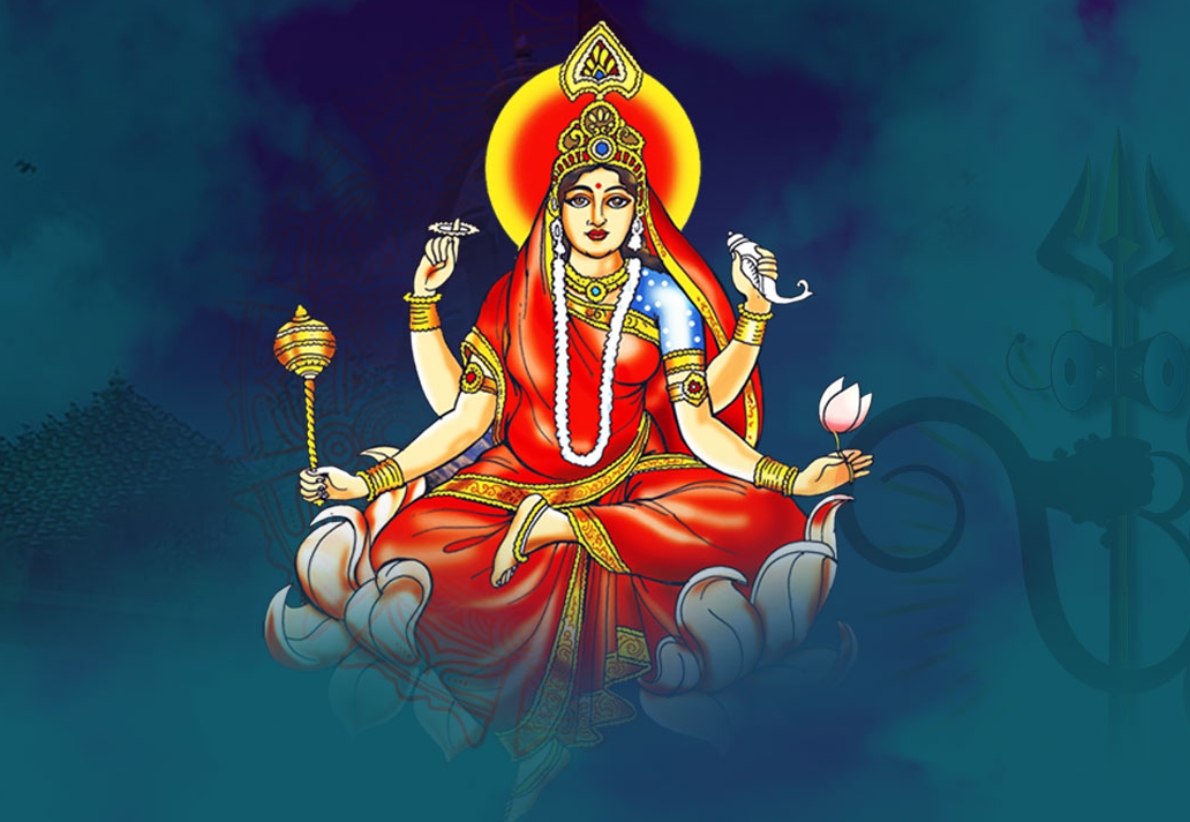
Siddhidatri: The Granter of Spiritual Powers and Enlightenment
Siddhidatri is the last of the nine forms of Maa Durga. She is known for giving supernatural powers and enlightenment. She represents the full power of divine energy and is seen as perfect. You can picture Siddhidatri sitting on a lotus or riding a lion. She has four arms, each holding different items—a discus, a conch shell, a mace, and a lotus. These items show other sides of spiritual perfection.
People who follow her believe that by worshipping Siddhidatri, they can gain all eight supernatural abilities, known as Siddhis. They think this worship can help them find enlightenment. The ninth day of Navratri, her special day, is significant for those looking for spiritual growth. Her blessings can lift you beyond everyday life, helping your soul grow and reach the highest spiritual levels.
Spiritual Significance of Worshipping the Nine Forms of Maa Durga During Navratri
Worshipping the nine forms of Maa Durga during Navratri is deeply meaningful. Each form of the goddess represents different life and spiritual aspects, helping followers achieve enlightenment and purity. Navratri is more than a festival; it’s a spiritual quest through human life and cosmic energy.
Each day of Navratri focuses on a different form of the goddess, bringing specific blessings and powers. Through rituals and prayers for each goddess, followers aim to purify their souls, strengthen their morals, and deepen their spiritual understanding. This structured worship leads to a transformative experience, helping to connect more deeply with the divine and awaken spiritually.
Conclusion
The nine forms of Maa Durga are more than just figures; they’re steps in a spiritual journey during Navratri. Each form offers something unique, from strength to wisdom, helping followers grow and change. People can find deeper spiritual understanding and inner peace by connecting with these divine forms. So, celebrating Navadurga isn’t just about honoring the goddess, it’s also a way to advance on your spiritual path.